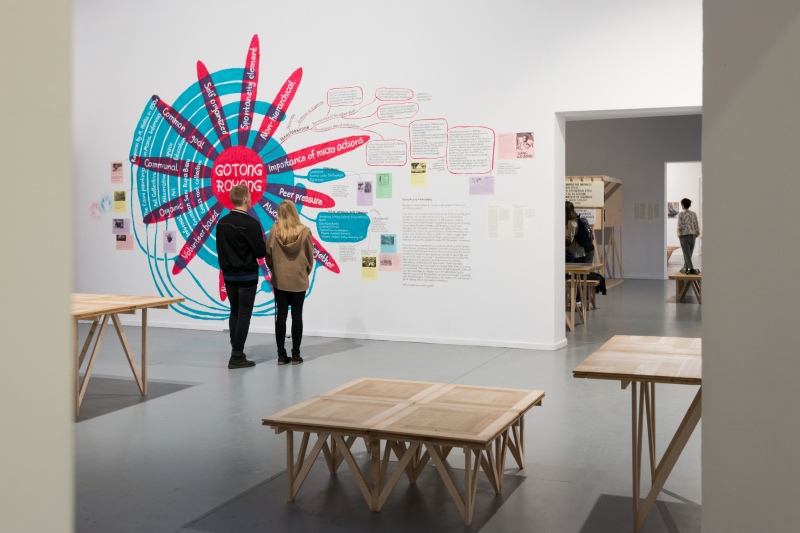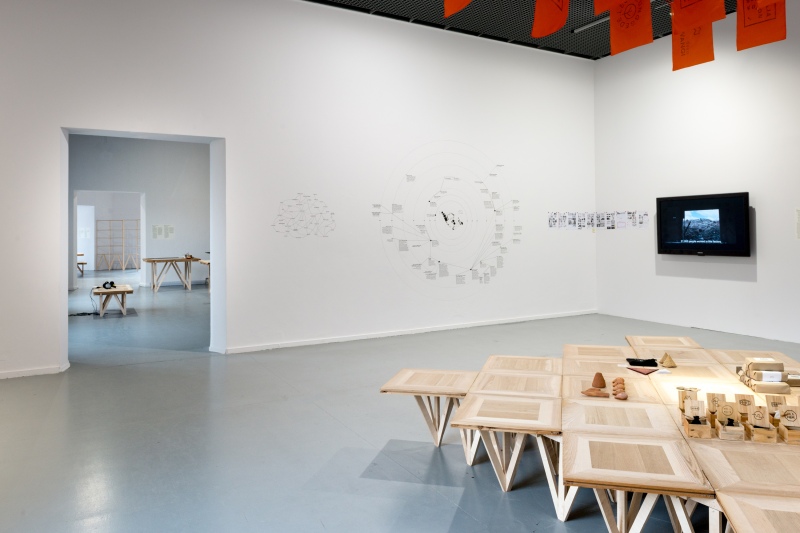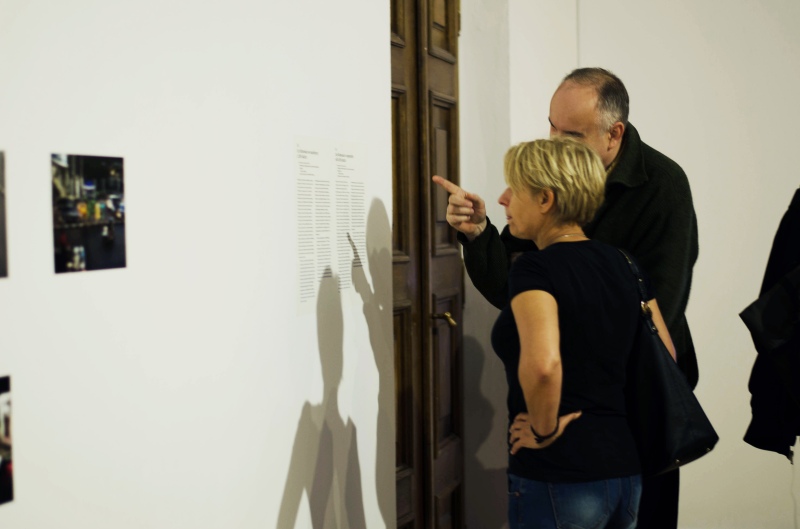The story
Gotong Royong. Things We Do Together
Exhibition – meeting – cooperation
Gotong royong means a shared cause in the Indonesian language. It is a work method that is widely used in Indonesia and that could also be explained descriptively as things we do together, learning from each other in a mutual activity. The title of the exhibition-meeting is a proof of the recognition of practices of informal artistic education and community self-organization that are characteristic of that culture, which is also known under different names in many places around the world. The 1950s in Poland had tłoka (i.e. a form of social self-help), and again in the present day, communities in Mexico organize themselves through teqio. The term gotong royong became both the topic and the method of work on our venture. Within the exhibition and the concurrent public program, we present and set in motion practices that were not intended to produce objects (though that is possible) but rather affects – feelings and experiences, the creation of the space for encounters and dialogue and work towards a social change.
Can knowledge come into existence as the sum of ignorance? What is needed for this seemingly impossible equation to be fulfilled?
Cooperation is something more than just a mechanism for the collective management of resources and can be a way to overcome the systems that rule both the art world and everyday life, where capitalism and extreme individualism result in the collapse of communities and an increase of social inequalities. The art world system supports a patriarchal economic model – the set hierarchy of productive and reproductive work – by focusing on the presentation of effects, it omits the hidden aspects of work. When resources change into shared goods, how can they be collectively activated for the sake of community-building and what role does art play in that process? In what way can art institutions become a part of this in a conscious way? How can artists and institutions contribute to social change? Isn’t it time to revisit the value system that the art world is ruled by?
More and more frequently, artists, activists, researchers and educators initiate social situations – in places where institutions fail, they establish their own. Often they work collectively, for a community and in cooperation with it, and the space of influence of their practices is often situated outside the gallery rather than inside it. They treat art as a tool for building the community and not a production of market goods. Their practices are often based on research, process, long-term cooperation and a readiness to take risks connected to exchange, generosity and trust. They stand up against market laws and stand up on group work, solidarity and the sharing economy. They produce alternative systems for teaching and for un-learning, new economies and imagination spaces. They redefine art definition. By hacking the systems, they work in local contexts and enter into dialogue with communities from geographically distant regions. This is how the male and female participants of Gotong Royong. Things We Do Together work, using competencies from different fields in their practice to support and create communities – at Ursus, in Amazonia, Kenya and the villages of West Java or in the New Orleans’ suburbs.
Looking for an answer to the question of what the Things We Do Together are, we present reports of the many years’ experience of the creators, collectives and communities using their own rules of good-work ethics in practice. Wanting to break an over-production problem and wasting materials, together with the architect Maciej Siuda, we were searching for unused resources of the institution. The architecture was built from decades-forgotten parquet found in the Ujazdowski Castle basement. The exhibition space was designed in a way that enables spending more time in it. It will provide a working space, a cinema, documentation of practices, photography cycles, video works and a collection of objects and didactic materials presenting methodologies of activities by invited artists and groups.
The exhibition-meeting aims at making the visitors familiar with the complex stories, narratives, processes and contexts in which the chosen practices take place. The text plays an important role in understanding them. This is why we dedicated special attention to descriptions of those actions. A rich public and discursive programme consisting of a series of meetings, workshops and performative activities, including in the Warsaw public space, will complement their presentation.
Within the programme Intervalo-Escola – Time for a Break, initiated by Tainá Azeredo, an informal temporary collective of young artists, activists and researchers from Warsaw works in the exhibition space for the whole duration. Intervalo-Escola is the heart of the exhibition, where encounters and workshops will take place and its actions will permeate into the public programme of the exhibition. So the exhibition will become a space for dialogue, discussion, knowledge production and exchange, and conversation about important things, visited not once but many times.
Uninstitutional practices and new spaces for interdisciplinary experiments are born before our eyes. By showing the potential for changes that could be introduced by art into everyday life, the exhibition-meeting Gotong Royong. Things We Do Together can be a space for actual encounters between creators and recipients who, by resigning from playing their customary roles, exhibiting and viewing, can also become participants in an experience of “getting to know each other in action”.
Marianna Dobkowska and Krzysztof Łukomski
curators
*
Long-term projects carried out by the Ujazdowski Castle Centre for Contemporary Arts based on its art residencies programme Social Design for Social Living, Re-directing: East, and Common Fix, as well as the curators’ research in Indonesia, New Orleans and Mexico, are the starting point for the Gotong Royong. Things We Do Together exhibition-meeting and the public programme. Its structure, content, and the list of invited participants and co-workers are the result of many meetings and journeys, joint work and getting to know each other in action, so it is the shared [art]work of everyone engaged in its creation.





























